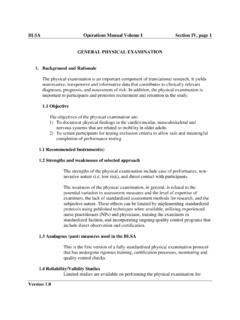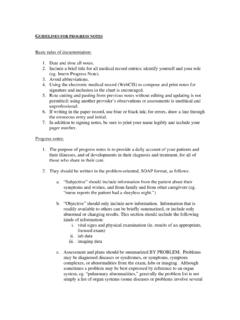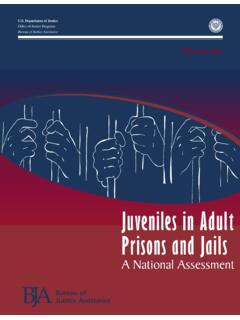Transcription of From exclusion to inclusion - ERIC
1 From exclusion to inclusion : ways of responding in schools to students with special educational needs Mel Ainscow, Alan Dyson and Saira Weiner Centre for Equity in Education, University of Manchester From exclusion to inclusion : ways of responding in schools to students with special educational needs School improvement: international reviews of best practice Working with partners including the Department of Education at Oxford University, the Centre for Equity in Education at the University of Manchester, the University of Glasgow, the University of Nottingham and the Hong Kong Institute of Education, CfBT Education Trust has commissioned a series of reviews of international literature.
2 These reviews cover a range of topics related to school improvement including assessment for learning; the inclusion of students with special educational needs; effective teaching practice; school self-evaluation; and successful school leadership. The idea that schools can impact positively on student outcomes is a crucial driver in the rise of interest in school improvement research and practice. These reviews highlight international examples of best practice in order to effect change and identify how effective school improvement manifests itself.
3 It forms a useful tool for schools and school leaders, but also acts as a lesson for policymakers in terms of what works around the world. This review focuses on: From exclusion to inclusion With a specific focus on children with special educational needs (SEN), this review addresses the forms of classroom practice that can help all children to participate. The review particularly focuses on elements of inclusive education and the implications for schools and school leaders. The other four reviews in this series focus on: Assessment for learning Assessment for learning where the first priority is to promote learning is a key means of initiating improvement.
4 The features, strategies and principles underpinning assessment for learning form the basis of this review. Effective teaching Teachers are one of the key elements in any school and effective teaching is one of the key propellers for school improvement. This review is concerned with how to define a teacher's effectiveness and what makes an effective teacher. It draws out implications for policymakers in education and for improving classroom practice. School self-evaluation for school improvement School self-evaluation can be a fundamental force in achieving school improvement.
5 This review establishes what the key debates are in relation to school self-evaluation, what principles and processes are associated with it, and what the implications are for school self-evaluation as a means of leading school improvement. The review incorporates a framework for conducting self-evaluation and case study examples from systems and schools that have previously undergone the process. Successful leadership School leaders are under considerable pressure to demonstrate the contribution of their work to school improvement, which has resulted in the creation of a wide range of literature which addresses leadership in the context of school improvement.
6 This review pays particular attention to issues including transformational leadership, instructional/pedagogical leadership and distributed leadership. CfBT is a world authority on school improvement. We work directly with schools and governments improving education outcomes through evaluation, training and professional development programmes. This series of reviews fits into our aim to develop evidence for education and supports our goal to provide school improvement programmes which are evidence based. Copyright CfBT Education Trust 2013.
7 The views and opinions expressed in this publication are those of the authors and do not necessarily represent the views of CfBT Education Trust. From exclusion to inclusion : ways of responding in schools to students with special educational needs Contents Executive summary 2. Introduction 3. From exclusion to inclusion 4. Inclusive practices 7. Developing inclusive practices 11. Support for learning 15. School development 17. Leadership for inclusion 21. Drawing out the lessons 23. References and further reading 24. 1. From exclusion to inclusion : ways of responding in schools to students with special educational needs Executive summary This paper reviews the international literature on the development of effective ways of including children and young people with special educational needs in schools.
8 It addresses three overall questions: What forms of classroom practice can help all children to participate and learn? How can such practices be developed? What does this mean for school organisation and leadership? The analysis of the literature suggests six key ideas: Schools need to understand clearly what is meant by inclusive education. Inclusive classroom practices involve overcoming barriers to student participation and learning. Engaging with various kinds of evidence can encourage teachers to develop more inclusive practices.
9 Additional support for individual students should be carefully planned; those involved require appropriate training. Inclusive schools can take many forms, but they all have an organisational culture that views student diversity positively. Leaders have a central role in working with their colleagues to foster an inclusive culture within their schools. The literature suggests that supporting students with special educational needs, and other groups of vulnerable learners, depends less on the introduction of particular techniques or organisational arrangements, and much more on processes of social learning within particular contexts.
10 The use of evidence as a means of stimulating experimentation and collaboration within a school is a central strategy. Because schools already have much of the expertise that is needed to support the learning of all of their students, including those with disabilities and special educational needs, inclusive development should start with a detailed analysis of existing practice and with the sharing of expertise amongst staff members. There is also a need to focus on the attitudes and beliefs of staff members: to enlarge their capacity to imagine what might be achieved, and increase their sense of accountability for bringing this about.












